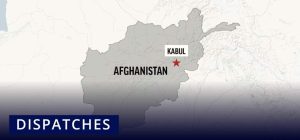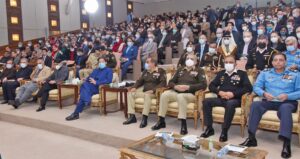When it comes to terrorist groups’ cost-benefit calculus of adopting and innovating with emerging technologies, there are two opposing conceptual views.
The first viewpoint suggests that terrorist groups are risk-averse due to limited resources, and they rely on tried and tested methods of violence instead of experimenting with emerging technologies. This logic is driven by optimum returns on minimum resources calculations, i.e., they try to maximise their benefits with minimum risks. For instance, over the last two decades, terrorist groups have primarily relied on guns and improvised explosive devices (IEDs) to carry out violent attacks.
The opposing view is that due to power asymmetry against conventionally superior militaries of adversarial states, terrorist groups must innovate tactically and technologically to overcome their relative disadvantage. For instance, suicide bombing is one of the most effective tactical innovations which militant groups in Afghanistan and Iraq used quite effectively against the US and allied forces.
However, terrorist groups carefully choose only those technologies which enhance their relative power, do not collide with their norms, values and ideological worldviews. Likewise, affordability, simplicity (easy to use), accessibility and multiuse of emerging technologies are other factors that terrorist groups consider when they adopt them.
It has been observed that terrorist groups innovate during open technological revolution, such as the information revolution in the early 2000s and the emergence of social media more recently, as compared to close technological revolution such as the invention of nuclear weapons. The latter is heavily guarded by military and political elites against falling in the hands of terrorists.
When terrorist groups successfully embrace the use of emerging technologies meeting the above-mentioned criterion, they add to their lethality of their violence longevity of their lifecycles.
In the last few years, three emerging technologies, social media platforms, drones and Artificial Intelligence (AI) have diffused into Pakistan’s terrorist landscape with far reaching consequences both for terrorism and counterterrorism. As these technologies improve commercially and become cheap, the Pakistani terrorist groups will eventually adopt them.
Pakistani terrorist groups across the ideological spectrum are using encrypted and open social media platforms to recruit, radicalise, fundraise and incite violence. Social media has become an important component of their so-called ideological or propaganda warfare. Four major terrorist groups, Tehreek-e-Taliban Pakistan (TTP), Ittehad-ul-Mujahideen Pakistan (IMP), the Islamic State of Khorasan Province (ISKP) and the Baloch Liberation Army (BLA)-Zeb faction possess elaborate and professional propaganda arms.
As social media companies’ crackdown removed content and accounts of these groups on open platforms like X, Facebook, Instagram, they migrated to encrypted messaging apps, such as Telegram, Rocket Chat and Signal, among others, to persist and propagate their narratives.
At the same time, they found more creative ways of circumventing content moderation gaps to reconstitute their presence on open social media platforms. For instance, some accounts on X posing as Open-Source Intelligence (OSINT) researchers and analysts propagate terrorist groups’ narratives by subtly mixing them with other conflict-related updates and content.
Such border line (or grey zone) content enables them to persist on open platforms, which as compared to closed platforms provide them more traction and allows them to attract larger audience, without violating their community standards. Pakistani terrorist groups have effectively utilised both open and encrypted platforms in a professional manner to create their digital footprints and despite several challenges, including censorship in mainstream media and content removal by social media companies. They have managed to get their message to larger audiences.
The second emerging technology which has gained traction in recent months in Pakistan is the use of quadcopters for attacks, propaganda (recording attack and training videos) and intelligence, surveillance and reconnaissance (ISR) operations. While almost all terrorist groups, barring ISKP, are using drones for propaganda and ISR purposes, only TTP and IMP have weaponised them. So far, all drone attacks by terrorist groups in Pakistan are concentrated in the restive Khyber Pakhtunkhwa province.
TTP and IMP have modified commercially available Chinese quadcopters which can take off and land vertically to drop small payloads (mortars, hand grenades and explosive filled plastic bottles) onto ground targets. Mostly, such quadcopter attacks have hit military convoys, security check posts, police stations and military’s forts across Khyber Pakhtunkhwa.
Despite their limited lethal power, the accuracy and technical expertise exhibited in quadcopter attacks underscore inter-group transfer of knowledge and resources from Al-Qaeda and the Taliban to TTP and IMP.
The sanctuaries provided to TTP and IMP by the Taliban regime in Afghanistan plays a critical role in procuring, experimenting and honing the use of drones before successfully employing them in the battlefield. Without safe havens, as in the case of ISKP, weaponising quadcopters is almost impossible. BLA has also not used drones for attacks, despite ISR operations, perhaps due to lack of expertise. It can take a terrorist group two to three years, or may be more, to gain the knowledge and expertise to weaponise drones.
The third concerning trend is the use of Generative Artificial Intelligence (AI) by Pakistani terrorist groups to translate their propaganda materials into multiple regional languages, create infographics, posters as well as news bulletins. Some groups like ISKP also experimented with AI-generated video to claim attacks in Pashto and Dari languages but they were full of technical glitches.
Later, due to internal debates and ideological disagreements, ISKP shied away from producing more such videos despite proliferating AI manuals and urging its online supporters to produce more such videos in multiple languages in 2024. Furthermore, Baloch groups have used AI to produce video depicting gamification of violence to attract young and educated Baloch’s to their fold. Notwithstanding the limited and rudimentary use of AI by Pakistani terrorist groups, the trend will gain momentum as the technology will permeate in the society in the coming years.
Pakistan’s existing counterterrorism framework will require a fundamental overhaul to account for these new threats. Such as through incorporating anti-drone systems, building cyber capabilities to monitor online propaganda activities of terrorist groups and forge a working relationship with various social media companies to ensure their removal. The threat of terrorism is evolving quite rapidly, and Pakistan’s response will have to be agile, proactive and tech-savvy to stay ahead of the curve.
Disclaimer: The views expressed in the article are of the author and do not necessarily represent the institute’s policy.
Authored by: Abdul Basit is a Senior Associate Fellow at the International Centre for Political Violence and Terrorism Research (ICPVTR), a constituent unit of the S. Rajaratnam School of International Studies, Nanyang Technological University (NTU), Singapore.
Read More: ISKP’s Local Strategy in Central Asia


